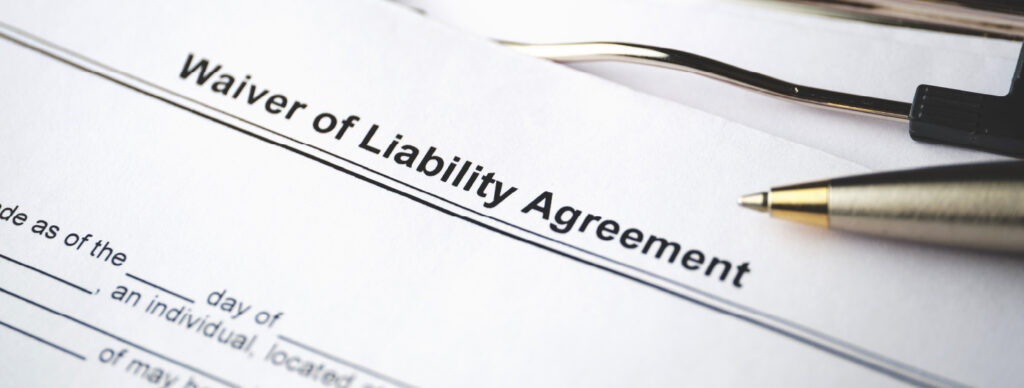Have you ever been accused of negligence? It can be a daunting experience that leaves you uncertain about your future and the potential consequences.
In these instances, it’s crucial that you develop an understanding of the legal strategies available to you which can help you navigate the complexities of negligence cases. When it comes to legal proceedings, negligence refers to the failure to exercise reasonable care, resulting in harm to others.
But what can you do when you’re faced with these accusations? How can you defend yourself effectively? In this article, we’ll dive deep into the world of negligence defences, sharing our insight on common strategies that can help you protect your rights and achieve a fair outcome. So join us as we explore some key defences for negligence.

Contributory Negligence
When it comes to defending against negligence, one strategy that you need to be aware of is contributory negligence. But what exactly does this mean? Well, imagine you’re driving down the road, and suddenly someone cuts in front of you without warning. However, you were changing the radio station at the time, and as a result, your reaction to this was delayed. You slam on the brakes, but unfortunately, a collision still occurs. In this scenario, if the court determines that you were also partially responsible for the accident, your defence could involve the concept of contributory negligence.
Contributory negligence recognises that sometimes both parties involved in an incident may have contributed to the harm that was caused. It shifts some of the blame onto the injured party for not exercising reasonable care for their own safety, while also recognising that if the other party had acted responsibly, the harm could have been avoided or minimised.

What Is The Outcome?
Contributory negligence assesses the degree of fault of each party involved and allocates the damages accordingly. In New South Wales, the compensation that is awarded is subject to a percentage basis. For example, if you were accused of negligence, but the court proceedings determined that 40% of the injury was inflicted by the other party, then your liability for damages will reduce by 40%. This allows for a more equitable distribution of blame and ensures you’re only liable for the damages you truly caused.
Why Consider Contributory Negligence?
Contributory negligence is commonly used in negligence cases because it is more likely to reduce liability and ensures a more equitable outcome that can satisfy both parties. If you think this might be a potential defence strategy that applies to your case, be sure to inform your negligence lawyer so that they can make a decision on whether it may be an appropriate strategy to consider. Remember, the key is to show that the injured party’s own negligence contributed to the harm and that their actions or lack thereof played a role in the incident.
Voluntary Assumption of Risk
If you’ve been accused of negligence but the injured party was aware of a specific danger and still chose to proceed, you may consider the voluntary assumption of risk as a defence strategy.
Consider this example. Imagine you decide to go skydiving. Before your jump, the instructor provides you with thorough instructions and highlights the risks involved, including the possibility of injury or even death. Despite this, you willingly sign a waiver acknowledging the inherent dangers and proceed with the jump. If an injury occurs during the skydiving experience, the voluntary assumption of risk defence may become a relevant defence.

In New South Wales, the principle of assumption of risk recognises that individuals who engage in activities with known risks are responsible for their own injuries. However, it’s important to note that this defence may not apply to all situations. For example, if the risk involved was unreasonably high or if the injured party was misled or presented incorrect information about the risks, the defence of assumption of risk may not hold.
What Is The Outcome?
The outcome of these cases is not usually a straightforward matter and can vary from case to case. The damages that the accused party are liable for tend to revolve around the circumstances surrounding the case and may also depend on the injuries or harm they received.
Why Consider Assumption of Risk?
Understanding the concept of voluntary assumption of risk can be very helpful if you regularly deliver a high-risk service, and can assist you in defending against negligence claims. It allows you to demonstrate that the injured party was fully aware of the risks involved and made a conscious decision to proceed nonetheless. By doing so, you can argue that you should not be held fully responsible for the harm caused and potentially avoid significant legal fees and consequences.
Other Defences To Consider
In addition to the two major defence strategies for negligence, there are a few other defences that may also be used when individuals seek to claim damages in a negligence case.
Obvious Risk
This defence can be used to justify that you had no obligation to explain the dangers of an “obvious risk”. This generally applies to cases where the risks are common knowledge and easily observable, such as stepping over the foul line in a bowling alley and slipping on the surface.

Inherent Risk
This defence explains that the activity undertaken by the injured party had an inherent risk that couldn’t be avoided with even the greatest care. This might be a reasonable defence if an individual were to walk across a golf course and sustain an injury as a result of being hit by a golf ball.
Inevitable Accident
This defence explains that the injury or harm caused was the result of an unavoidable accident or circumstance beyond the control of either party involved. This defence is usually used in driving-related matters, such as when a driver’s vision was impaired by an object that entered their eye which resulted in a collision.
The Power of Knowledge in Negligence Cases
Understanding the common legal strategies and defences in negligence cases is crucial for anyone facing these accusations. By familiarising yourself with concepts like the tort of negligence and defences such as contributory negligence, comparative negligence, and assumption of risk, you can navigate the complexities of the legal system more confidently.
Remember, each case is unique, and seeking the guidance of an experienced and reputable negligence lawyer is crucial. They can provide personalised advice, assess the specific circumstances of your case, and help you choose the best defence strategy for your case.




